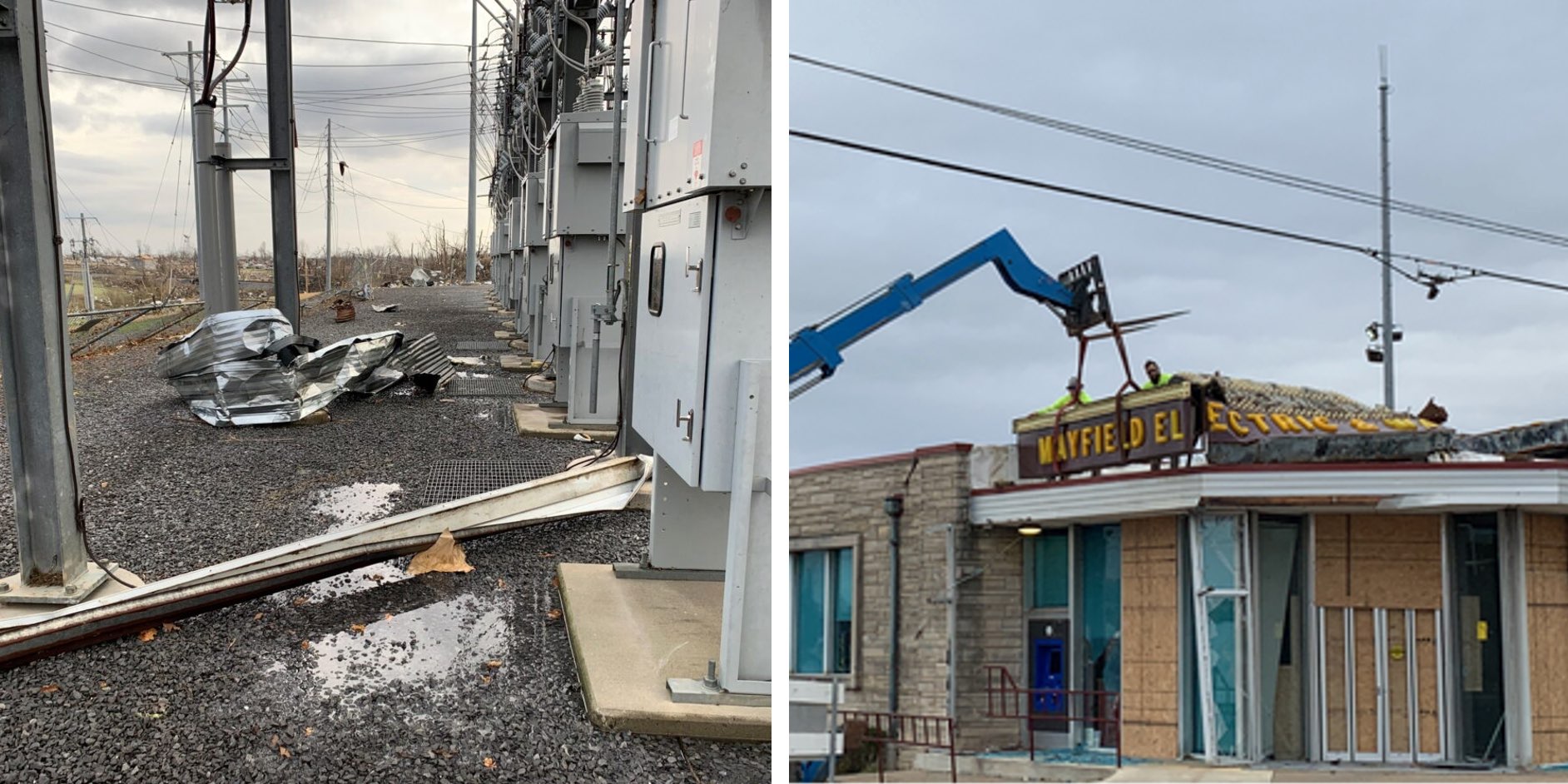Utility uses advanced metering infrastructure to track repairs after a tornado
On December 10, 2021, at 9:27 p.m., a tornado with winds of up to 190 mph (305 kph) touched down in Mayfield, Kentucky, creating widespread outages and mass devastation throughout the community. The local utility used advanced metering infrastructure (AMI), a digital offering from Xylem’s Sensus brand, to respond to leaks faster and track power restoration.
Grave uncertainty and mounting grief filled the Mayfield community in December 2021 as the swath of tornado destruction was more than a mile wide. The storm tragically took 22 lives, leveled 481 homes, businesses or structures – all within three minutes to forever change the small town.
This was not the first major weather emergency the city had encountered. In 2009, a severe ice storm caused 10,000 people to lose power. All communication capabilities were severed, and they had no outage restoration plan in place. The service provider hobbled their way to recovery.
Marty Ivy, the General Superintendent of Mayfield Electric & Water Systems, was adamant that he and his team be more prepared next time. He created a list of challenges they faced, mistakes they made in their response efforts and ideas for improvement to ensure a better way forward.
Putting emergency preparedness into action
Following the December 2021 tornado, Ivy’s preparedness paid off.
“My first thought was, ‘are my employees okay?’” said Ivy. “I connected with each of my managers, and they began making calls to the rest of our team members.”
Once everyone was found safe, Ivy reserved 100 hotel rooms in neighboring communities so his employees would have electricity, running water and a temporary home for their families.
The next step was evaluating their systems and equipment. They checked water and sewer plants, electrical substations and more. What they found? Rubble. Everything was destroyed.
Their fleet of bucket and digger trucks was totaled. They had to purchase new trucks to begin recovery efforts. Even the utility’s main office was struck. Their servers and computers were gone.

An invaluable support network
With $45 million worth of damage, it was clear the City of Mayfield needed helping hands.
“It all happened so quickly,” said Ivy. “On Friday, we had a company of 42 employees. On Monday, we had 250 people helping us. From linemen to water operators and pipe fitters, people from all over the Tennessee Valley and Kentucky were there to pitch in.”
Vendors, friends and strangers alike supported Mayfield without hesitation.
“Everyone in the utility industry helps each other out,” said Ivy. “One of the first groups to call and offer support was Xylem. We’ve been a Sensus customer for 12 years now, and I consider them my friends.”
Within 48 hours, Xylem engineers visited Mayfield to check equipment and ensure both electric and water meters along with the FlexNet® communication network continued robust, reliable operations in the aftermath. Other employees volunteered through a local church and put on their boots and gloves to help in the massive cleanup effort. Xylem also partnered with Americares to set up a charitable campaign that yielded $28,000 in relief funds.
Relationships mean a lot to Ivy. He looks back on the tornado in 2021 and says close-knit relationships with partners like Xylem, were key to his team’s resilience.
“You can’t do it yourself,” said Ivy. “So many people poured their hearts out to help us and I will never be able to repay them.”
AMI system speeds up outage restoration and leak detection
Using their advanced metering infrastructure (AMI) and meter data management system, Mayfield could remotely track each time someone’s power was restored.
“It’s invaluable to have an AMI system,” said Ivy. “We used ours to export visual graphs of our electric restoration progress. Knowledge is power, and we used this information to understand our remaining workload and to share status reports with the community.”
Within 30 hours, Mayfield’s water system was fully operational and pressurized. The AMI system helped speed up the team’s response to repair leaks in the tornado zone so they could tackle the biggest water issues first.
The neighboring utility, West Kentucky Rural Electric Cooperative, pitched in to assist and just five days after the disaster, Mayfield had three circuits operational and restored power to the local hospital. Crews continued to work diligently, and the outage restoration timeline happened with incredible speed for a city that was nearly leveled:
- By one week, the substation was back online
- In two weeks, more than 80% of the city was reenergized
- Within one month, all power was restored to customers who could be reconnected to the grid
Ivy gives all the credit to slowing down, planning and committing to not push his team too hard. They worked tirelessly but with strict instruction not to work overtime.
The team’s discipline and precision ensured a safe environment and an efficient recovery. Mayfield now has a thoroughly documented process for crisis response. Should another weather emergency strike, they will be ready to tackle it again along with their partners.

